Ragnatsch – Palfries
When Mussolini (1926) and Hitler (1933) came to power in Switzerland’s neighboring countries, and France built new fortifications to protect its borders, Sargans Fortress was upgraded to become the third national fortress after Saint-Maurice and St. Gotthard. The Palfries plateau forms part of Sargans Fortress, which was constructed to protect the Rhine Valley starting in 1938 and especially during the Second World War. In 1941, in order to supply the troops stationed there, a reversible aerial tramway was built by the Ragnatsch local authority (municipality of Mels). Like many military ropeways in Switzerland, it was engineered by the Oehler company in Aarau.
After the Second World War a proposal was made to continue to operate the ropeway for private passenger transportation. When negotiations with the interested parties in the local community finally failed, the installation was handed over to the 13th Fortress Guard Company on February 1, 1947, and public services were discontinued “until further notice”, which ultimately meant a period of almost 70 years. The ropeway remained in operation, however, as the area was used in the following decades as a training ground for the military. The advantage of that decision was that the Palfries reversible was kept in good condition. In 1980 the system was refurbished by the Garaventa company and two new carriages and hangers installed, each of them carrying a ten-seater cabin manufactured by Gangloff. The work also included the replacement of all the sheave trains and the entire drive assembly (motor, gearbox and brakes) in the bottom station.
New developments in international military doctrine in the early 1990s led to a change in strategy in Switzerland, too. The Alp Palfries area was declared unsuitable for infantry exercises, and military operation of the railway ceased in 1998. Unlike other military ropeways, the question of the liquidation of the Palfries reversible did not arise; the army found a buyer, namely the Palfries Cableway Cooperative, which was established to resume services for civil operations, i.e. tourism. However, it was then another 17 years before the many obstacles could be overcome and various modifications implemented to the specifications of the IKSS (Intercantonal Concordat for Cableways and Ski Lifts). It was only thanks to the tenacity and persistence of local idealists and the ropeway expert Reto Canale that the Palfries Cable Car was issued with a cantonal operating permit on November 4, 2015 and opened to the public on May 28, 2016. Above all, the renaissance of the reversible was only possible because of the countless hours of unpaid work performed by dozens of enthusiasts. Even today, the operation and maintenance of the reversible is in the hands of a team of 70 members of the Palfries Cableway Cooperative, who do all the work in their own free time and without pay.
The bottom station in Ragnatsch in the Seez Valley is well served by public transport. It is a concrete building painted in a camouflage finish. The top station is also a concrete structure with a flat roof and is built into the slope at the back. The two track ropes have socket connections to counterweights in the bottom station, while the tensioning system for the haul rope is in the top station, with the counterweight located in a tower standing in front of the actual station. With a length of more than 3 km, the line has nine lattice towers with pivoting track rope shoes. In 2019, the control system was refurbished by Frey AG of Stans. The power supply for the controls in the top station is provided by photovoltaic cells and batteries.
The ropeway offers access to an extremely attractive local recreation area with various walks and a cosy mountain inn. Although transport capacity is low, total rideage is almost 16,000 a year. Advanced booking is essential in fine weather especially. The Palfries Cable Car uses its own classic Edmondson card tickets, which many visitors take home with them as a little souvenir of their trip. For some visitors today, the ride on this ropeway evokes memories of their military service.

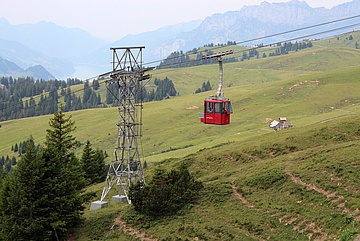



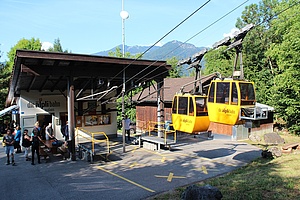

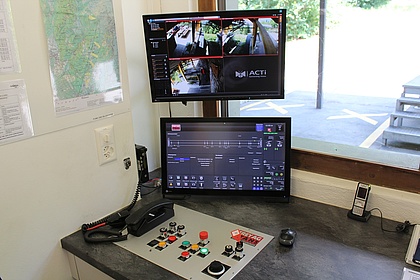

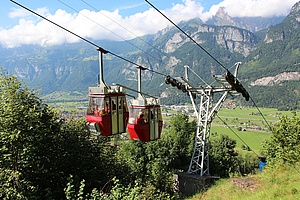


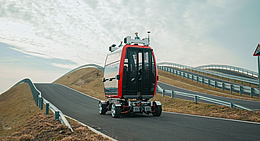

![[Translate to English:] (c) Doppelmayr](/fileadmin/_processed_/b/3/csm_85-ATW_Stechelberg-Muerren_Lauterbrunnen_CHE_001_6442c0520d.jpg)








